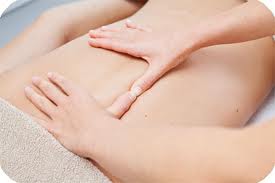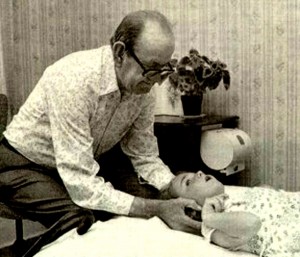What is Bowen Therapy
 Bowen Therapy is a gentle form of body work in which subtle moves performed over the muscles and connective tissue send messages deep into the body, retrieving cellular memory of a relaxed, balanced way of well-being.
Bowen Therapy is a gentle form of body work in which subtle moves performed over the muscles and connective tissue send messages deep into the body, retrieving cellular memory of a relaxed, balanced way of well-being.
Bowen moves are light, gentle and very precise. There is no forceful manipulation. The practitioner is able to discern stress build-up in the muscles and other soft-tissue, enabling them to perform specific Bowen moves to assist recovery and pain relief.
So, Bowen Therapy is a holistic approach to pain relief and healing. Through specific soft tissue or fascial release and integration techniques, it stimulates specific receptors that enable the body itself to correct dysfunctions and restore homeostasis (balance) on a holistic level.
Through treating the cause rather than the symptoms Bowen Therapy has consistently shown it can have profound and permanent healing and pain relief outcomes. This relief is experienced by many people who present with a wide range of painful conditions, even where other modalities or treatments have resulted in transient or little improvement.
Importantly, Bowen Therapy, being holistic, does not rely on a detailed diagnosis of the problem and its origins, which is often costly and indeterminate. Bowen Therapy treats the whole body, and its holistic effects are apparent in patients who find resolution to problems above and beyond those for which they have sought treatment, for example lack of energy, stress or emotional issues.
 Brief History
Brief History
Bowen Therapy was developed by Tom Bowen (1916-1982), who discovered that making small and gentle movements on strategic points in the body generated an integrated healing response.
He recognized an apparent common causal relationship in many seemingly unrelated painful conditions, particularly musculoskeletal but including neurological and other health problems. He identified this causal link or relationship as being the soft tissue or fascia that envelops the whole body from head to toe.
After years of clinical work and much reading and study of other modalities he developed a unique set of specific moves associated with different sequences and timing intervals. The moves provided fascial release and integration stimulating a variety of anatomical or physiological responses frequently resulting in long term and often immediate resolution of the majority of presenting problems and pain conditions
In 1975 the government instituted Webb Committee of Inquiry into Chiropractic, Osteopathy and Naturopathy in Australia reviewed Tom Bowen’s work. They found he was seeing some 13,000 people a year and achieving a success rate in his practice of over 80% of presenting conditions. From its Australian origins his innovative and unique technique has now been adopted world wide with devotees and practitioners in countries including New Zealand, USA, Canada, United Kingdom and European Union members.
The Benefits
Bowen therapy is considered suitable for the newborn through to the elderly and both chronic and acute conditions are thought to respond.
You can read about some conditions that Bowen might be able to support on our Home page.
The principal benefit of Bowen Therapy is the often rapid and long term or permanent remission from pain, reduced stress, greater mobility and improved physical and emotional quality and enjoyment of life.
Additional benefits can include increased energy, improvement in the immune system, re-balancing of the body, improved circulation, lymphatic drainage and detoxification.
Further and important benefits of Bowen Therapy are that it has few contra indications. It is very gentle, relaxing and non-invasive involving no manipulation, and is therefore ideal for everyone including children and the aged.
Video of Bowen Moves
The following short ‘You Tube’ clips give a good introduction to Bowen Therapy, and what it involves.
An introduction to the Bowen Technique:
Bowen Technique John Wilks Part 1
Bowen Technique John Wilks Part 2
Bowen Technique John Wilks Part3

